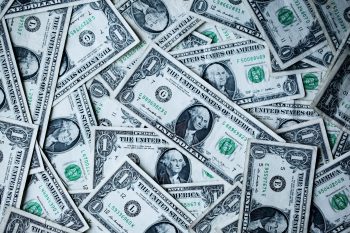Published: September 5, 2019
 One of the most important—and difficult—decisions you need to make as an indie author is how much to charge for your book. After all, how does one put a price tag on something toward which you’ve devoted so much time, energy, heart, and soul? None-the-less, it can’t be an emotional decision. You need to look at what the trends are in the market, and also consider your price from a standpoint of the buyer.
One of the most important—and difficult—decisions you need to make as an indie author is how much to charge for your book. After all, how does one put a price tag on something toward which you’ve devoted so much time, energy, heart, and soul? None-the-less, it can’t be an emotional decision. You need to look at what the trends are in the market, and also consider your price from a standpoint of the buyer.
So, how much should your book cost? Price it too high, and you could lose some sales. Too low, and you won’t see an adequate return on your investment. Unfortunately, there’s no perfect answer to this question, but there are some pointers that can make the decision just a little bit easier.
Check out the competition
First, look at what other authors are charging for books in a similar genre. This will give you a pretty good idea what readers are willing to pay. Price doesn’t equal quality, however. Of course, you may feel like your book is better than the rest—as you should! But the reader doesn’t know that. If a reader is looking for a new beach read, they’ll most likely go with the book at the most attractive price point. You might able to charge a bit more for a non-fiction book, though, particularly if it’s in a niche market.
Don’t undercut the competition too much
Price your book too low, however, and you could send some red flags to the reader
What’s wrong with your book? Why is it so cheap? And an unintended consequence of undercutting your competition could be dragging down the market value of your entire genre.
End it in an odd number
It really is true, consumers perceive $9.99 as a better deal than $10, even though the difference is only a penny. Same goes for .89, .79 and so on. When settling on a price for your book, always end it in an odd number. For print books, we recommend .95 at the end, for ebooks, .99 is common
Remember, you won’t pocket it all
Your royalty payment is the amount you’ll realize from each book sold. What that amount will be varies depending on the publishing service and the format of the book, but it will be calculated on the retail price you set.
For ebooks on Amazon, royalties range from between 35 percent to 70 percent, depending on how much the book costs. Print royalties are lower. The sales discount (the amount the retail seller gets for selling your book) is usually between 40 and 55 percent of the retail cost, and once that’s taken, the cost to print the book is deducted. So for a book retailing for $20 with a 50 percent discount and print cost of $4, your royalty would be $6. If a retail site, such as Amazon, decides to discount your book, the discount will come from their end, not your royalties.
Don’t forget: if you purchase and sell the book yourself, you can sell it for whatever price you like. Your royalty will be the difference between the print cost and the sale price if you act as the seller.